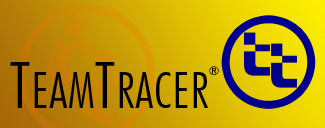
|
|
|
New England Security and Communications is a registered vendor with:
|
Incident Command System for EMSBy Stephen Marks - Carolina Fire Journal - Winter 2007 EditionThe Incident Command System (ICS) is not just for the fire service anymore. Emergency Medical Services (EMS) providers should embrace ICS as part of the National Incident Management System (NIMS) along with their fire service partners. And while some may profess that a unique or agency specific version of ICS is just what the doctor ordered for EMS, the reality of NIMS dictates that we all use the same system, regardless of our organizational affiliation.In fact,any deviation from the prescribed NIMS ICS would be of no value in our attempts to develop a standard incident management program across the country. With just a single curriculum to teach, one would surmise that EMS providers would be quick to jump on the bandwagon. I have found, however, that teaching EMTs and paramedics the ins and outs of ICS is notably different than teaching the same material to firefighters. What’s the difference you ask? Again, the material is the same. In this case, however, it is the application that differs. Many of the examples and exercises used in ICS training are fire service based, making it more difficult to interface into the EMS community.And as we all know, there is an inherent difference between how a firefighter operates as compared to how an EMT or paramedic functions. Firefighters are used to working together as a crew of normally three to four personnel. EMTs and paramedics, however, are normally assigned as a two person team.Firefighters have an assigned officer on their engine or ladder company while an EMS unit operates much more independently. And while patient care is the primary responsibility of both services on the vast majority of medical calls, there is a big difference in how each agency handles the call. As such, it is a challenge to deliver ICS training material in the same fashion to both the fire service and EMS providers. Recent revisions to ICS training materials are lessening this challenge.The current edition of ICS training developed and delivered by the Emergency Management Institute (EMI) in cooperation with the Federal Emergency Management Agency (FEMA), the National Wildfire Coordinating Group (NWCG) and the United States Department of Agriculture (USDA) helps to bridge this gap. The exercises contained in the various ICS training manuals are now multi-agency in design and allow for participation from a much broader audience. This will help to reduce some of the confusion and resistance towards EMS ICS training. Regardless how effective ICS training is for EMS providers, the lessons must be practiced in the field if the system is to be of any benefit. Simply sitting through a class or two to meet the standard does not make anyone proficient in using ICS.While all of the introductory ICS classes are available online, the classroom setting is much more productive for most students. The challenge of course is to bring all the employees in for such classes. If the agency chooses to utilize online training, follow up exercises should be conducted to reinforce the lessons learned. Proper use of ICS should also be emphasized for day-to-day operations. By now, every emergency services organization should have initiated some basic NIMS and ICS training. All personnel should have taken IS-700 (Intro to NIMS), ICS-100 (Intro to ICS) and supervisory personnel should have taken an additional course, ICS-200 (Basic ICS). These three courses will provide personnel with the basic tools to function within the ICS structure. Everyone should be familiar with responsibilities of the Incident Commander along with the Command and General Staff positions. Additionally, all personnel should understand their role as a Single Resource as well as a member of a Task Force and Strike Team, as these components are the basic elements of field response. An EMS unit responding to a medical call is an example of a Single Resource. Several EMS assets performing a specific function (like triage) would function as a Strike Team while mixed assets (an EMS unit along with a law enforcement officer and a fire department engine company) would be a Task Force. The person in charge of these organizations components is called a Leader. As the size of the operation grows, the ICS structure can be expanded to maintain the proper span of control.The next level up in the organizational structure is called the Group or Division. |
||||
|
|||||